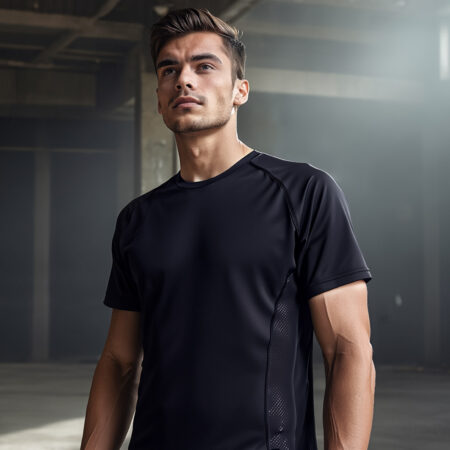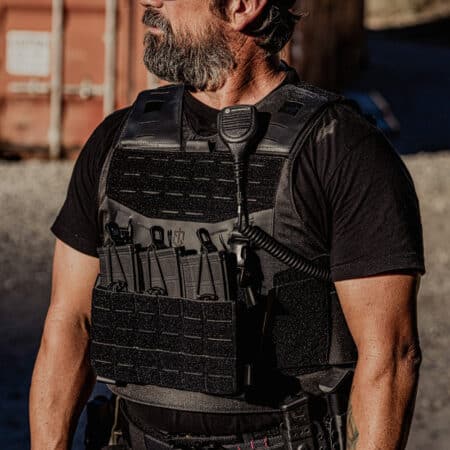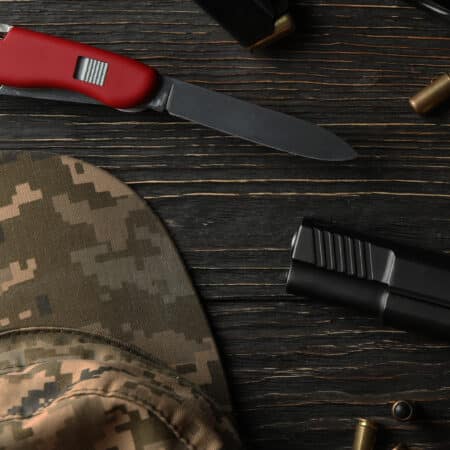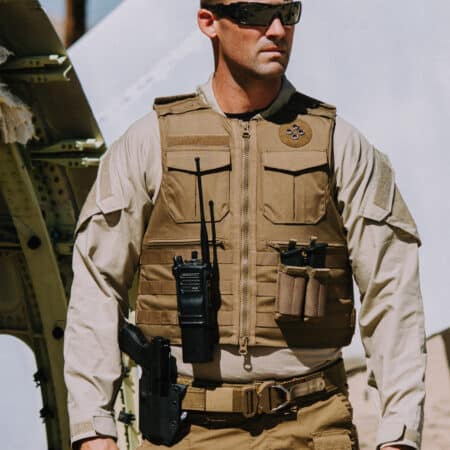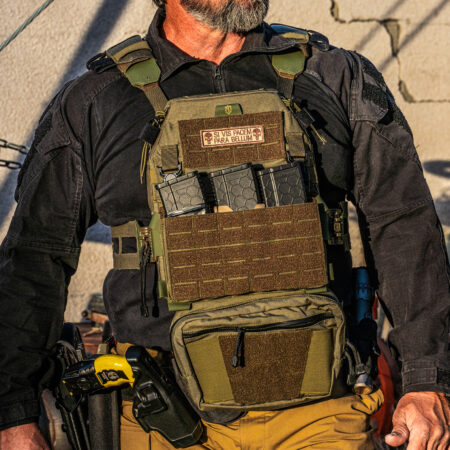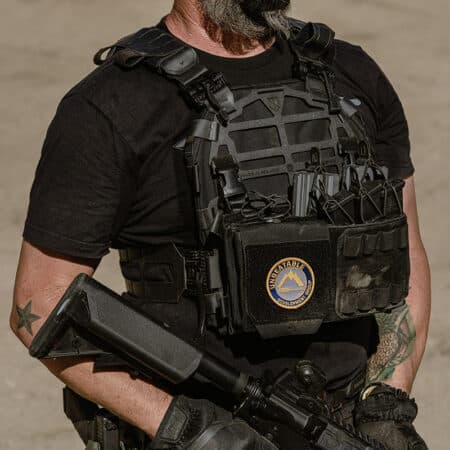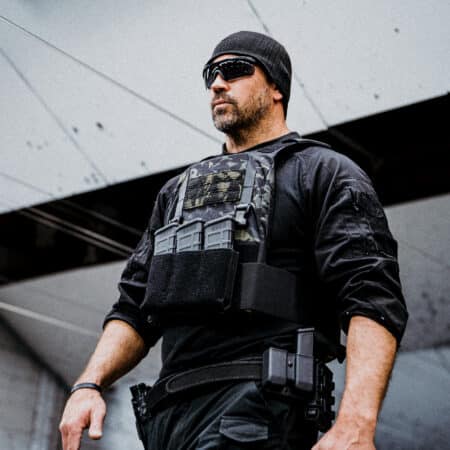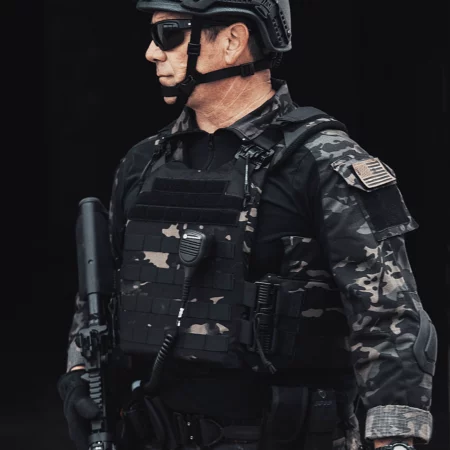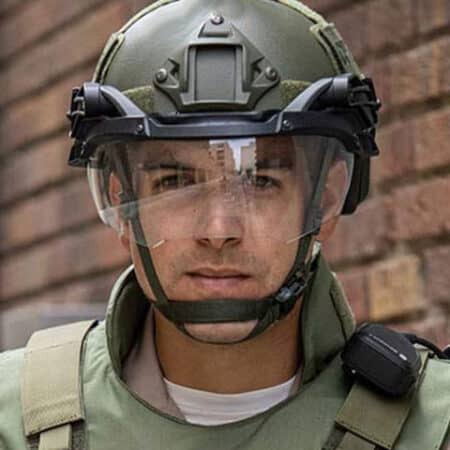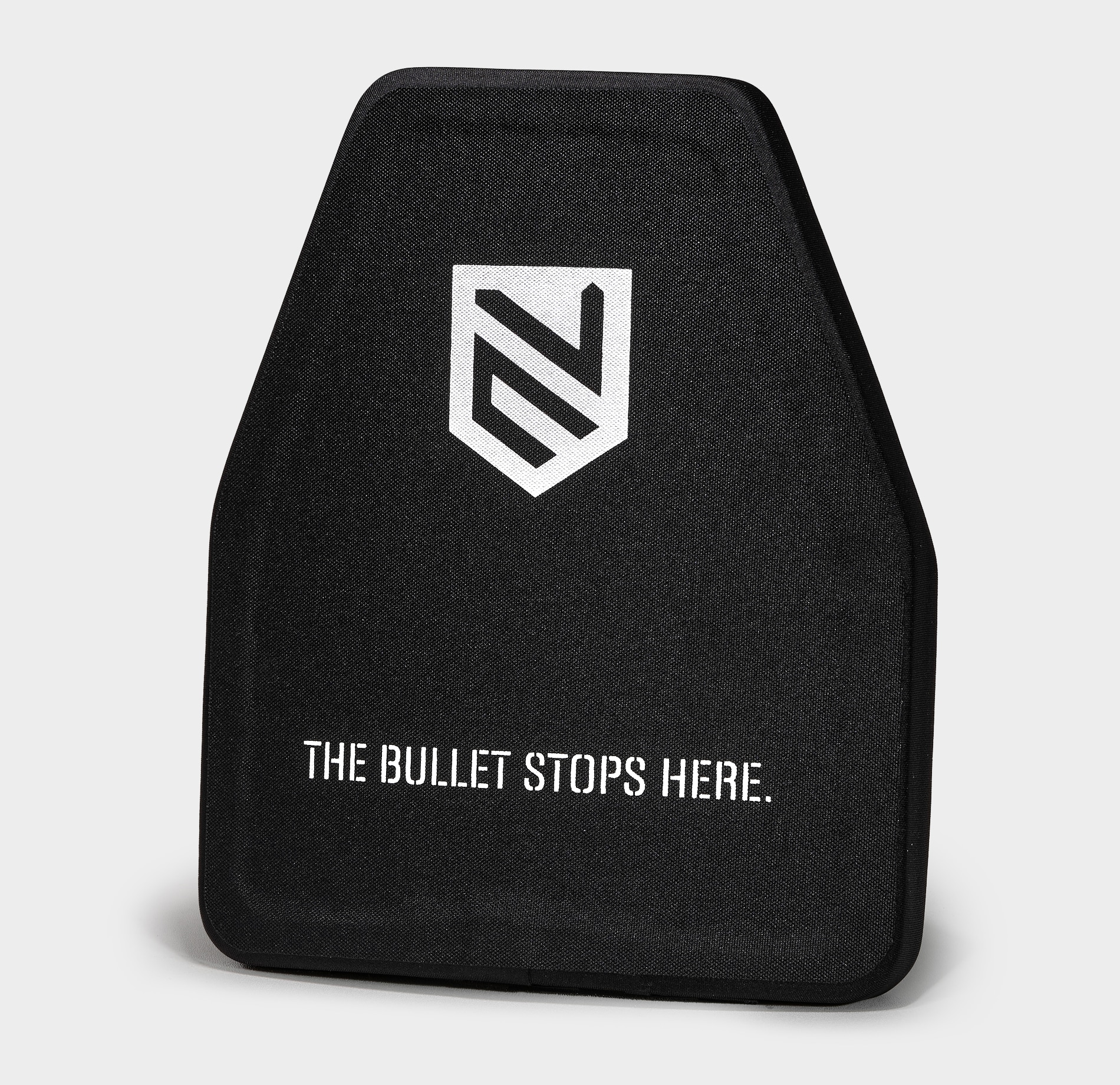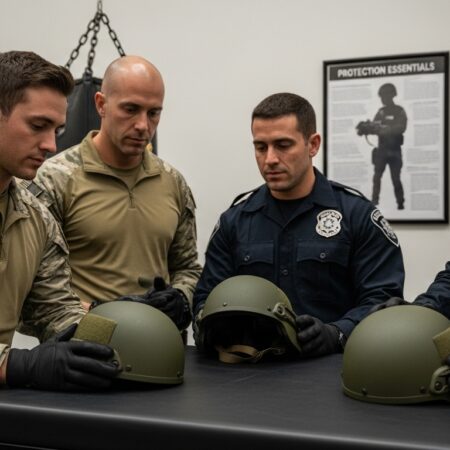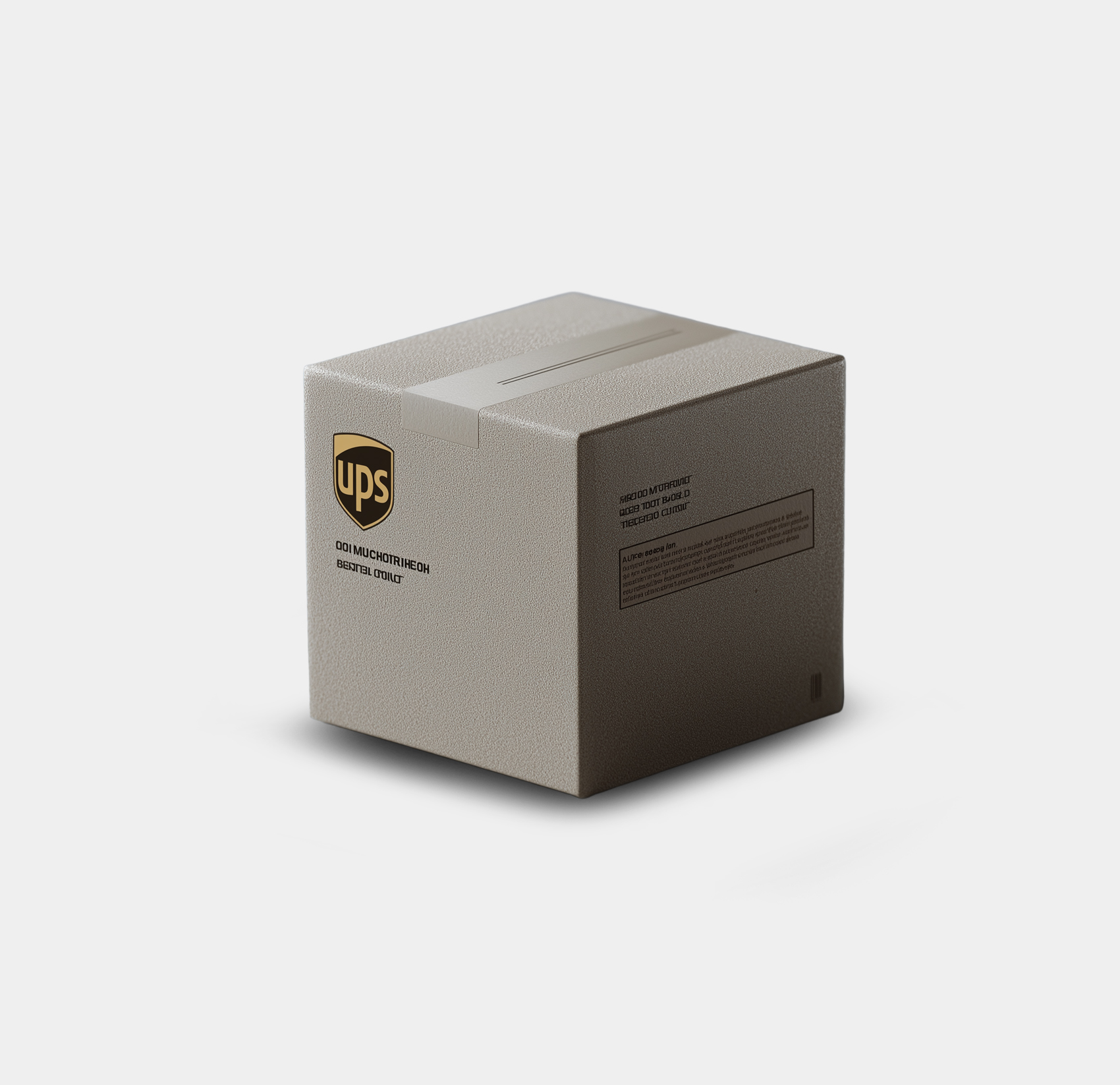When it comes to body armor, hard armor plates offer the best possible protection. They can even stop armor-penetrating rounds, and can greatly improve your overall tactical effectiveness on the battlefield. However, as you might expect, these plates can also get quite heavy, and their shape can affect your overall mobility. This is why armor plates are made in multiple profiles like Swimmer’s cut, and Shooters Cut. Some Profiles sacrifice a little bit of coverage, to give you considerably more mobility.
There are multiple kinds of armor plate profiles, however, among the popular options, two stand out: the Standard Cut and the Swimmer’s Cut. Each offers distinct advantages depending on body size and mission requirements.
So, Let’s break down the pros and cons of each plate type to help you make the right decision.
Standard Cut: Maximum Coverage, Reliable Protection
These plates have a standard, or what some may call a SAPI Profile. The SAPI (Small Arms Protective Insert) Profile refers to a specific shape and sizing standard for ballistic plates that are used by the US Military. Since most manufacturers like to follow Military specifications, SAPI cut has become the standard armor plate profile in the market. These plates are not complete rectangles but have small cuts on the upper edges, which help improve overall mobility.
Pros of Standard Cut Plates:
Superior Coverage: The Standard Cut provides comprehensive coverage for the upper torso, protecting vital organs like the heart and lungs.
Versatility: It is compatible with most plate carriers and is a reliable choice for military, law enforcement, and security professionals facing high-risk environments.
Best for Larger Body Types: Individuals with broader frames tend to find the Standard Cut more comfortable as it fits their body proportions better, providing sufficient coverage without compromising mobility.
Cons of Standard Cut Plates:
Limited Range of Motion: Due to its broad shape, the Standard Cut can restrict upper arm and shoulder movement, particularly during activities that require raising the arms or maneuvering in tight spaces. However, the restricted movement isn’t too severe in many cases. Most people are willing to slightly sacrifice their movement, to gain better ballistic protection.
Weight: Standard Cut plates can feel bulkier and heavier, leading to fatigue over extended wear times. This is especially noticeable during fast-paced operations where speed and mobility are key.
Standard Cut plates are ideal for operators who prioritize maximum coverage, such as soldiers in combat, police officers in active shooter situations, or security teams in high-threat environments.
Swimmer’s Cut: Agile, Lightweight, and Tactical
Now, let’s talk about swimmer’s cut armor plates. These plates are designed with a very steep cut on the upper corners, which may take away a little coverage, but stop the plate from signing into your arms, allowing for much better mobility. Let’s look at their pros and cons.
Pros of Swimmer’s Cut Plates:
Enhanced Mobility: Swimmer’s Cut armor plates feature tapered edges at the top corners. They allow for greater freedom of movement in the shoulders and arms. This increased mobility is perfect for situations that require fast, precise actions—whether it’s shooting or climbing obstacles. These plates also make it easier for you to shoulder your firearm properly, and get a good cheek weld on your stock while shooting.
Lightweight: By reducing the material in the shoulder area, the Swimmer’s Cut plates are generally lighter, reducing fatigue over time. This makes them a preferred choice for missions involving long periods of wear or high levels of physical activity.
Best for Smaller Frames: People with smaller body types or narrower shoulders often find the Swimmer’s Cut armor plates more comfortable than standard cut, as it provides a better balance between coverage and flexibility without excess weight.
Cons of Swimmer’s Cut Plates:
Less Coverage: The downside of the Swimmer’s Cut is the reduction in ballistic coverage, particularly in the upper chest area. While the heart and lungs remain protected, the narrower plate leaves some areas exposed, making it a less ideal option in high-risk scenarios where maximum protection is necessary.
Not Universally Compatible: Swimmer’s Cut plates may not fit all plate carriers, particularly those designed specifically for Standard Cut plates. This limits the flexibility of your gear setup.
Swimmer’s Cut plates are best suited for tactical operators who need to stay agile, such as special forces, SWAT team members, or private security professionals in mobile assignments. They are also a great option for smaller-framed individuals looking for a more ergonomic fit.
Product Comparison
Making the Right Choice: Factors to Consider
Now that you know the pros and cons of both types of armor plates, it’s time to make a decision. Here are some factors you should consider before you choose.
Mission Requirements: If your role demands maximum protection in high-threat environments, the Standard Cut is the way to go. However, if you need agility and mobility—especially in urban or close-quarters environments—the Swimmer’s Cut may be more appropriate.
Body Size: Larger-framed individuals might find the Standard Cut more comfortable, while smaller-framed individuals benefit from the lighter and more tailored fit of the Swimmer’s Cut. Also, if you have a large frame, swimmers cut plates might not fully cover your vital organs, making standard cut plates the only choice.
Duration of Wear: If you’ll be wearing your armor for extended periods, the lighter and less restrictive Swimmer’s Cut can reduce fatigue and improve comfort. On the other hand, short-term, high-threat missions might warrant the fuller protection of the Standard Cut.
Gear Compatibility: Always ensure that your plate carrier is compatible with the plate cut you choose. Some carriers are designed to hold both types, but others may not provide the best fit for Swimmer’s Cut plates.
Conclusion
Choosing between Standard and Swimmer’s Cut plates depends largely on your specific needs, body type, and the mission at hand. The Standard Cut provides maximum protection but at the cost of mobility, while the Swimmer’s Cut prioritizes agility and comfort with a trade-off in coverage. By considering your operational environment and personal comfort, you can select the armor plate that best meets your tactical needs.



